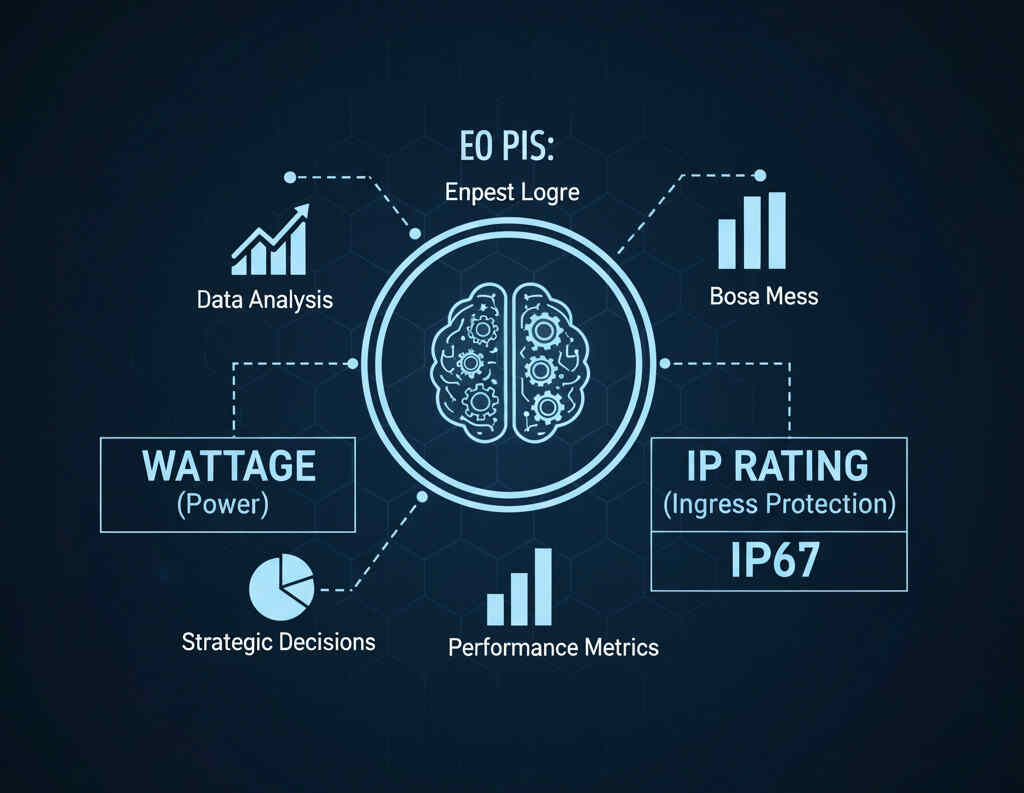One of the roles of executives is to advocate for the expected level of daily output from a team member with respect to the organization’s long-term expectations. Connecting that issue – linking high-level strategy and the day-to-day action that produces results – is the difficult part. Enter the Executive Operations Performance Indicator System (EO-PIS). The EO-PIS links the two while also providing a way for leaders to track, measure, and improve performance around the entire organization.
This article will address what an EO-PIS is, how it contrasts with conventional KPIs, and why an EO-PIS is quickly becoming a “must-have” tool for leaders today. We will describe some key features of an EO-PIS, discuss tangible benefits, and provide the steps to creating an EO-PIS so you have a framework for achieving data-driven operational excellence.
What is an Executive Operations Performance Indicator System (EO Pis)?
An Executive Operations Performance Indicators System (EO Pis) is a strategic management system created to provide executives a comprehensive view of the most important operational performance measures of an entire organization in real-time, from a unified place. Performance Indicators have traditionally been used to measure performance within specific departments and exist in silos, however, an EO Pis encompasses multiple functions, such as sales, marketing, operations, and finance, within one dashboard to develop actionable insights. The goal is to see beyond performance isolated to separate functional areas, and allow executives to formulate an answer to the purest degree of executive questioning, “How is the business doing right now, and are we going to achieve our strategic objectives?” By providing this high-level view to executives, an EO Pis will allow them to identify trends, address issues and make quick and nimble decisions that will guide the entire organization.
EO PIs vs. Traditional Key Performance Indicators (KPIs): An Important Distinction
Before examining the important features of the EO PIs, it is important to distinguish EO PIs from traditional Key Performance Indicators (KPIs).
They are specific metrics that evaluate the performance of a specific activity, team, or department. For example, a KPI of a marketing team could be ‘monthly web traffic’, a KPI of a success team could be ‘customer churn rate’, and a KPI of a call center could be ‘average handle time’ of the agents. While essential, KPIs provide a narrow, ground-level view.
EO Pis: This system aggregates multiple KPIs and other data points to provide a high-level, strategic overview. An EO Pi doesn’t measure all metrics but the specific ones that are highly indicative of overall company performance and progress on strategic priorities. It enables us to link the various metrics assessed at both a strategic level as well as at a department level, both of which represent the whole contribution to the top-line objectives.
Consider it as a dashboard in a car. The KPIs are a series of indicators: tire pressure, oil temperature, and fuel level. An EOPI is like a combination of a check engine light, speedometer, and GPS. It tells you the overall health of the system, your current speed and whether you’re headed towards your ultimate destination.
Key Features of an Effective EO Pis
A well-designed EO Pis is more than just a reporting tool; it’s an interactive system built for executive-level decision-making. Its core features typically include:
1. Centralized Data Dashboard
The foundation of an EO Pis is an aggregated, easy-to-use dashboard. It displays the most important metrics from the whole business in one location, so a number of executives do not have to bounce to several reports – or systems – to get their report. This single source of truth allows the whole leadership team to be looking at the same data.
2. Real-Time Data Integration
In a rapidly changing marketplace, decisions made last month are outdated already. An EO Pis connects to various business systems (CRM, ERP, financial software) that you use to pull data in real-time. This means that the information that is shown on the dashboard is the state of the business–not stale or dated data–which allows you to manage proactively rather than reactively.
3. Drill Down Functionality
While an EO Pis provides a high-level view, it must also allow executives to investigate further. When a high-level metric such as ‘customer lifetime value’ is decreasing, the leader can click on the metric and “drill down” to the KPIs that affect it, for example, ‘repeat purchase rate’ or ‘customer satisfaction scores.’ In this way, they can determine the cause of the dip.
4. Predictive Analytics and Forecasting
A modern EO Pis solution uses Artificial Intelligence (AI) and machine learning to move beyond historical reporting. By looking at past data and current indicators, this capability will forecast outcomes; for example, it may tell a leader they are projected to sell under their target for the following quarter or identify a growing risk in your supply chain. This predictive capability will elevate the EO Pis to a strategic foresight tool.
5. Automated Alerts and Notifications
No executive has the ability to monitor a dashboard 24/7. The EO Pis can be set up to notify the executive upon receiving an alert when a KPI metric wanders from its baseline/target range or detects a strange anomaly in the data. This allows leaders to manage by exception to evaluate when they need to pay attention to real issues.
The Tangible Benefits of an EO Pis
Incorporating an EO Pis into a company’s operating model provides tremendous value to key executive themes.
- Better, Faster Decision Making: The availability of consolidated real-time information enables leaders to leverage data backed information to make decisions confidently. This data-driven approach reduces reliance on gut feel or partial information, driving better strategy.
- Better Strategy Alignment: An EO Pis product makes strategy visible and measurable. When employees and leaders from C-Suite to department level can see how their work aligns and contributes towards top outcomes, everyone is aligned with a common goal.
- Better Resource Planning: An EO Pis shows what’s working in the business and helps identify where the company has problems. This allows executives to direct budgets, talent, and resources to the place within the organization that will provide the greatest possible benefit and productivity upside. Increased Organizational Agility: The capability to sense changes in the marketplace or pressure inside the organization as they arrive enables the organization to respond to them rapidly. This affords the organization a formidable competitive advantage in a rapidly changing business condition.
- Exceptional Accountability and Transparency: Transparency in reviews of performance creates accountability. Teams know what they are being held accountable for and how performance will be measured, which builds in the incentive for teams to hit their marked goals.
A Practical Implementation Framework:
Implementing an EO Pis requires a thoughtfully devised and targeted implementation plan.
Step 1: Set Your Goals
Before you start, you must know where you want to end up. What are the 3-5 essential strategic goals for the organization for the next 12-18 months? Some examples might include “increase market share by 10%”, or “improve customer retention by 15%.”
Your EO Pis must be built to track progress against these specific objectives.
Step 2: Identify Your Key Performance Questions
For each strategic objective pinpoint the important questions that the executive team should be asking. For the objective “Improve market sustainability,” some relevant questions may be: “Are we diversifying our offerings to address the needs of the community?” “Are we being invited to participate on a consistent basis?”
Step 3: Choose the Right Metrics
Select the handful of metrics that will sufficiently provide the answers based on your key questions you have prepared. These will be your Executive Operations Performance indicators. Do not get caught up in tracking every single item. Utilize both forecast indicators (or leading indicators), which provide information about the future, and trend indicators, which provide insight into the past, to gain a full perspective.
Step 4: Choose the Right Technology
Once you select the indicators you would like to put into use, selecting the best technology that pulls that particular data together is the next step. Look for something that will integrate with the current systems you use, and is able to visualize the data in real-time. The reality is, the technology that will give you what you need will have some of the features you are looking for, such as drilling down and using the alerts feature. The right technology should be simple to understand, with minimal training to get the executives using it properly.
Step 5: Focus on Data Integrity and Integrating
An EO Pis is only as good as the data it receives. Prior to launching, complete a data vetting process to ensure all data across sources is correct and accurate. Set a transparent process for data governance that ensures data integrity in the long run.
Step 6: Encourage Adoption with Change Management
Think of the EO Pis as an empowering tool, not a micromanaging tool. The leadership team should be trained, and you should discuss what they will see in the system and how it would be more effective than how they used to achieve their goals before. Lead from the front and demonstrate the value of the EO Pis in leadership meetings by incorporating it into discussions and talking through decisions based on the EO Pis.
Conclusion: Driving Strategy Forward with Clarity & Insight
An Executive Operations Performance Indicator System (EO Pis) is not just a fancy dashboard. It is a strategic discipline that creates a bridge between a vision and its execution. An EO Pis provides a clear, real-time, and holistic view of organizational performance that allow leaders to drive their organizations with precision and nimbly, if needed.
In a time when there is no lack of data but a lack of insight, an EO Pis can be the difference between being a market leader and simply remaining in the market. Clarity is vital for seeing through complexity, performance optimization, and allowing all parts of the organization to maintain focus and coordination on the organization’s most important objectives.





